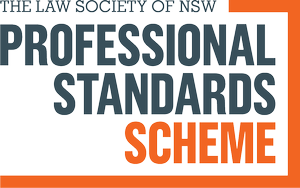Australian Bridging Visas
Bridging visas serve a crucial purpose for non-citizens who are dealing with visa issues, providing them with a means to maintain lawful status while they address their circumstances.
What is Australian Bridging Visas?
- - There are 7 bridging visas in Australia.
- - Bridging Visas are not substantive visas.
Australian bridging visas can provide a crucial lifeline for non-citizens who are facing visa issues in Australia. These temporary visas allow individuals to maintain lawful status in the country, even after their current substantive visa has ended. Bridging visas can be a critical pathway for avoiding being unlawfully present in the country, which can have severe consequences for individuals and their families.
Bridging visas are used in a variety of situations. For example, a bridging visa may be necessary while waiting for the outcome of a new visa application or appeal, or when circumstances have changed that affect visa status. Non-citizens may also need bridging visas when transitioning between different visa types, such as from a student visa to a skilled visa.
It’s important to understand that different types of bridging visas come with various conditions and limitations. Some bridging visas may impose work restrictions or travel limitations, while others require sponsorship or proof of exceptional circumstances. As such, it is essential to seek expert advice to determine the most appropriate visa type and the conditions that come with it.
Additionally, it’s important to note that bridging visas do not provide the same rights and entitlements as substantive visas. While a bridging visa can help maintain lawful status, it is not a permanent solution. Bridging visas can be cancelled if visa conditions are not met, or if the non-citizen is found to be in violation of Australian immigration laws. Therefore, it’s essential to work with a qualified immigration lawyer or registered migration agent to ensure compliance with visa requirements and regulations.
At our firm, we specialize in helping non-citizens navigate Australian immigration laws, including the process of obtaining bridging visas. Our team of experienced lawyers and registered migration agents can provide you with the guidance and support you need to achieve a successful outcome. We understand that navigating the Australian visa system can be complicated and stressful, and we are committed to providing our clients with the highest level of personalized service and support.
If you’re facing visa issues in Australian Visas, don’t hesitate to contact us to learn more about how Australian bridging visas can help you maintain lawful status and reach your immigration goals. Our team is here to help, and we are dedicated to providing you with the expert guidance and support you need to navigate the Australian immigration system successfully. Contact us today to schedule a consultation with one of our experienced immigration lawyers or registered migration agents.
Find out more about the different types of bridging visas and eligibility criteria below!
Bridging Visa A (BVA)
The Bridging Visa A is generally granted where there is an ongoing visa application or appeal.
Bridging Visa B (BVB)
The Bridging Visa B is granted when a BVA holder wishes to depart and re-enter within 3 months.
Bridging Visa C (BVC)
The Bridging Visa C is granted if the applicant does not hold a substantive visa.
Bridging Visa D (BVD)
The Bridging Visa D is granted for several days if an invalid application was made.
Bridging Visa E (BVE)
The Bridging Visa E is for unlawful non-citizens who have a pending matter in Australia.
Bridging Visa R (BVR)
The Bridging Visa R is granted in circumstances a person is pending removal.


